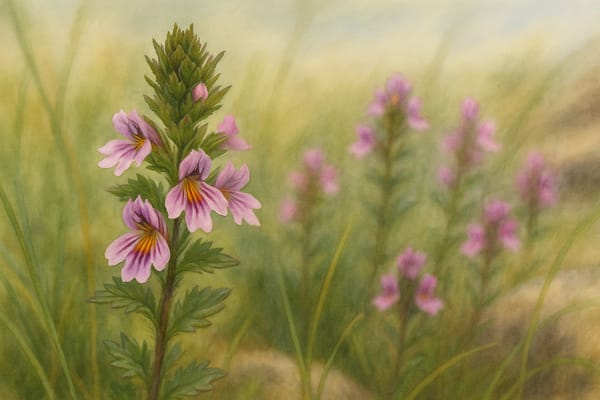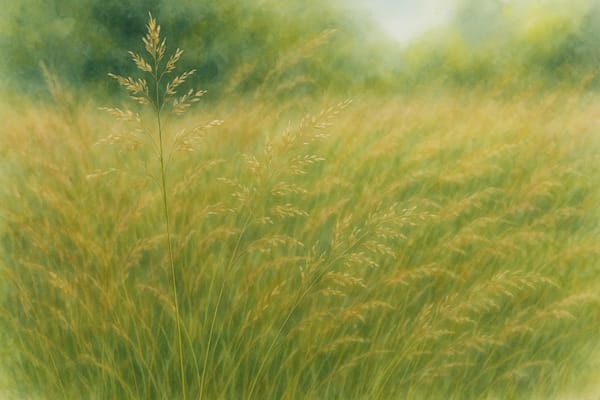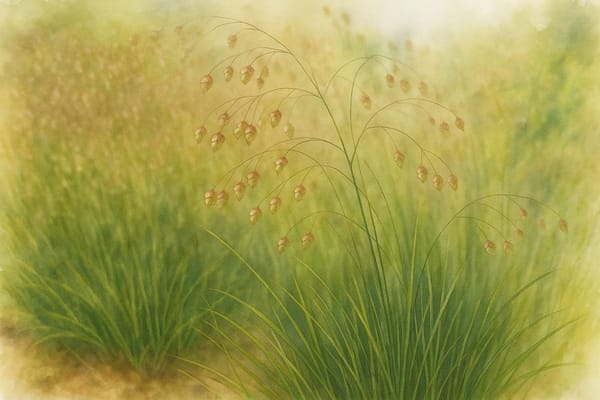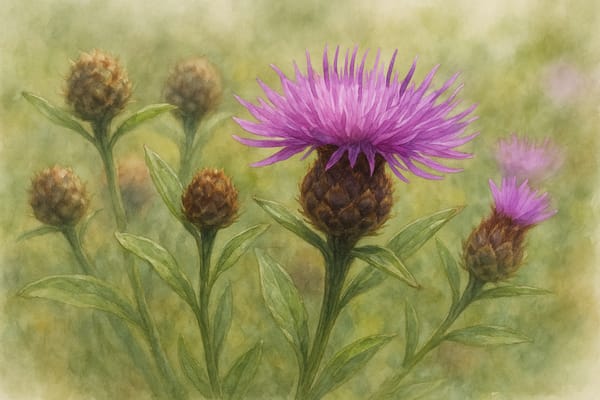An Endangered Jewel of Cornwall’s Heathlands
Historical and Cultural Significance
Cornish Eyebright (Euphrasia vigursii) is a rare and beautiful wildflower that holds deep significance in Cornwall’s botanical and ecological story.
- Endemism and Rarity: This species is native only to Cornwall and parts of Devon, making it a truly local treasure. Its limited distribution marks it as a symbol of Cornwall’s rich biodiversity and the uniqueness of its coastal heathlands.
- Botanical Heritage: Named after Dr. C.C. Vigurs, a respected Cornish doctor and botanist, Cornish Eyebright reflects the historical tradition of scientific curiosity and regional pride in Cornwall’s native flora.
- Conservation Symbol: As an endangered species and a priority for UK conservation, it highlights the importance of preserving traditional heathland habitats. Conservation groups use it to promote awareness of habitat loss and ecological protection.
- Cultural Identity: While not as famous as Cornish Heath, Cornish Eyebright is beloved by naturalists and ecologists for its role in defining the wild beauty of Cornwall’s southern landscapes.
Growing and Caring for Cornish Eyebright in Coastal Gardens
Cornish Eyebright is a hemiparasitic plant, meaning it partially depends on nearby host plants—typically grasses—for nutrients. It also photosynthesizes and prefers conditions that reflect its wild heathland origins.
Ideal Growing Conditions
| Factor | Recommendation |
|---|
| Sunlight | Full sun to partial shade (at least 6 hours daily) |
| Soil | Well-drained, acidic to neutral (pH 6.0–7.0), sandy or loamy |
| Host Plants | Native grasses or low-growing shrubs (e.g. western gorse) |
| Moisture | Moist but not waterlogged; drought-tolerant once established |
| Exposure | Open, coastal conditions with low vegetation competition |
Care Tips for Success
- Prepare the Site: Choose a sunny, low-fertility area with good drainage. Avoid overly rich soils or high-nutrient composts that encourage aggressive plants.
- Sowing Seeds: Sow in autumn or early spring by scattering lightly onto bare soil near appropriate host plants. Do not bury—just press gently.
- Maintenance:
- Encourage open conditions using gentle mowing or simulated grazing.
- Avoid crowding—remove encroaching weeds by hand.
- Limit watering after establishment; ensure site remains well-drained.
- Propagation: Allow natural self-seeding where conditions are right. Avoid heavy disturbance of the root zone.
Ecological Benefits
- Pollinator Attraction: The reddish-purple blooms are highly attractive to bees and other beneficial insects.
- Biodiversity Support: As part of a native wildflower meadow or heathland garden, Cornish Eyebright enhances the overall ecological value of a site.
- Conservation Planting: Its presence can aid in habitat restoration projects aiming to replicate historic Cornish ecosystems.
Quick Reference Summary: Cornish Eyebright at a Glance
| Aspect | Details |
| Cultural Significance | Endemic, endangered, symbol of Cornish botanical heritage |
| Soil | Acidic to neutral, well-drained, sandy/loamy |
| Sunlight | Full sun to partial shade |
| Host Plants | Native grasses, low shrubs (e.g. gorse) |
| Maintenance | Low; needs occasional trimming/grazing and open conditions |
| Wildlife Value | Excellent for pollinators and biodiversity |
Final Note
Delicate, elusive, and steeped in Cornwall’s ecological story, Cornish Eyebright (Euphrasia vigursii) brings rare charm and conservation value to any coastal or wildflower garden. Its successful growth honours the region’s native landscapes—and supports their future preservation.











